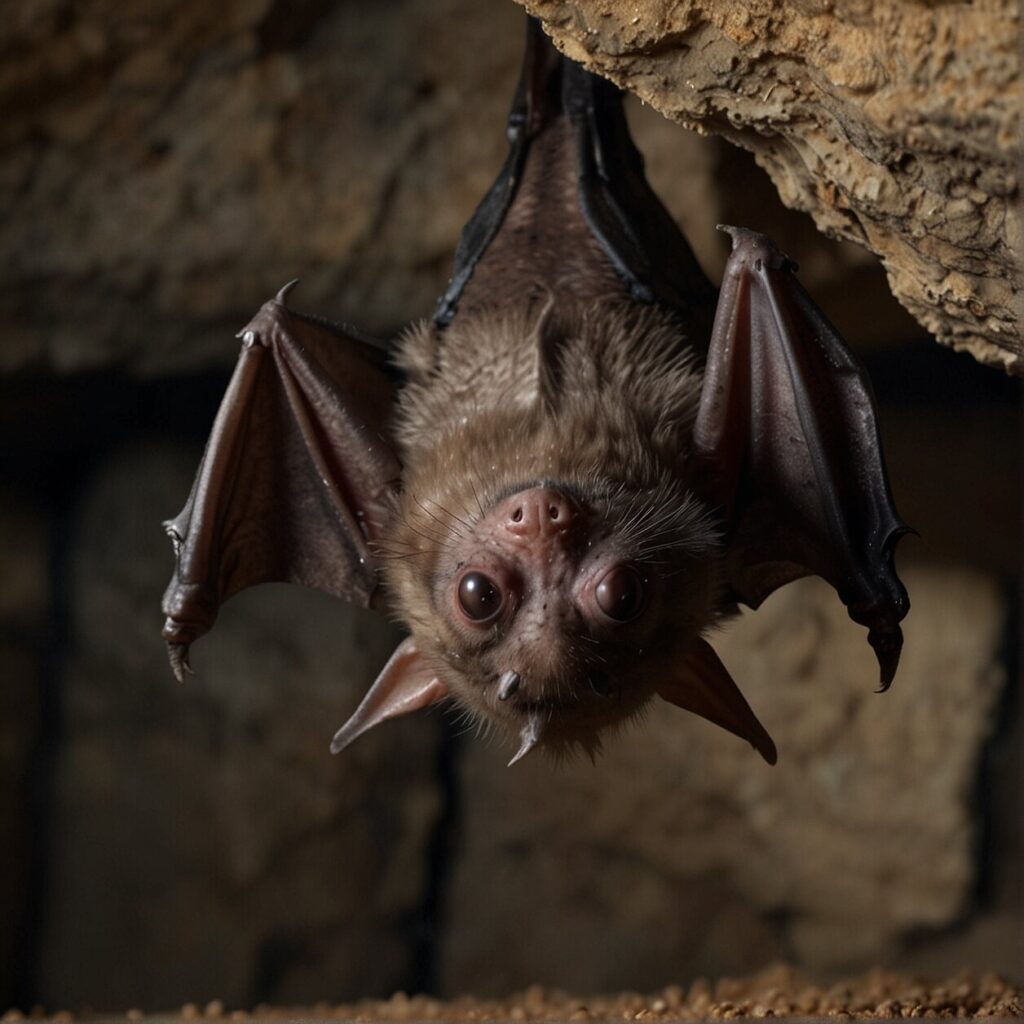Visiting the Bat Caves in Texas
Imagine standing at the mouth of a cave as dusk settles in around you. Suddenly, the sky darkens, not with clouds, but a flurry of fluttering creatures forming a river-like formation against the twilight sky. This isn’t a scene from a movie, not at all, rather it’s a typical evening for visitors at the Texas bat caves, the world-class spectacle that hosts the largest bat colony in the world.
Home to an estimated 20 million Mexican free-tailed bats, these caves provide nature enthusiasts unparalleled opportunities to bear witness to the beauty and diversity of our ecosystem. The experience is thrilling, unforgettable, and a stark reminder of the wonders our planet nurtures.
“Dusk is when the magic begins, for that’s when the bats take to the skies. It’s a sight that stays with you, a testament to nature’s awe-inspiring cycle.”
The dance of the bats in the Texas sky, under the cover of evening, is a spectacle like no other. But beyond just being a marvel for our eyes, it also offers critical lessons on bat conservation and the various myths associated with these intelligent creatures. The Texas bat caves are a haven for these gentle, nocturnal mammals, but they are also potent symbols of the need to protect and conserve biodiversity in an increasingly urbanized world. Join us on this exploration, and let’s delve deeper into the fascinating world of Texas’s bat caves.
Discovering the World’s Largest Bat Colony: A Guide
You might be wondering what exactly awaits you at the world’s largest bat colony, situated in the verdant landscape of Texas. Sit tight, my friend, this is a journey that’s going to blow you away!
The Bracken Cave is home to over 20 million Mexican Free-Tailed Bats, making it a spectacle not to be missed. And it’s not just the mind-boggling numbers that are impressive. These bats play a significant role in shaping the surrounding ecosystem. They feed on countless insects each night, including many agricultural pests, providing a natural alternative to chemical pesticides. Yes, you heard it right. When you visit this colony, you’re not just witnessing a wild spectacle, you’re paying homage to an army of nocturnal farmers helping to keep our crops clean!
But let’s not rush things. Your experience starts right at the mouth of the cave, where gigantic swarms of bats spiral into the twilight sky. It’s like watching a live nature show. And as they vanish, you’re left in awe of the sheer magnitude of this spectacle.
Your journey continues with guided cave tours, where you’ll learn all about the different species of bats, their habitats, and how they contribute to the ecological balance. Trust us, there’s more to these nocturnal creatures than meets the eye.
We strongly believe that involvement breeds understanding. That’s why we also offer volunteering opportunities. Whether it’s assisting with bat counts or helping maintain the habitat, every little helps in promoting bat conservation. This could be your chance to contribute, not merely spectate.
Last but not least, the truth about bats isn’t so dark as the caves they live in. Yes, they’ve been the poster animals for horror stories for centuries, but let’s bust some of those myths. No, bats are not blind. In fact, their navigational skills are impeccable. And remember, bats are not out to suck your blood (well, most of them aren’t). In truth, they are shy creatures who prefer to keep to themselves.
In short, a visit to the bat caves in Texas isn’t just an extraordinary wildlife experience; it’s a testament to the incredible world that unfolds when dusk falls. An opportunity to learn, contribute, and eliminate the misconceptions surrounding these marvellous creatures. And we cannot wait for you to embark on this journey.

Behind the Scenes: The Fascinating Lifestyle of Bats
Sure, bats might seem spooky to some. Yet, once you get beyond the myths and misunderstandings, you’ll discover creatures that are amazingly interesting and completely essential for our global ecosystem.
First off, a bit of surprising bat trivia; bats make up a whopping 20% of all mammal species worldwide. Talk about a successful evolutionary story! They range from the bumblebee bat, the smallest mammal on Earth, to the giant golden-crowned flying fox with a wingspan reaching 5 feet.
Bats have a dual nature. By day, they are peaceful sleepers, huddled together in caves, trees, and under bridges. But as the sun sets and night takes hold, bats become dynamic hunters. Most species of bats are nocturnal creatures, easy to spot during their evening flights in search of food. They play a crucial role as pollinators and pest controllers. They are spectacular insect hunters, with some species eating up to 1,200 mosquitoes an hour!
What’s more, bats are social animals. Just like their human spectators, they value family and community. The Bracken Bat Cave in Texas is proof of this with a stunning 20 million Mexican Free-tailed bats calling it home during birthing season.
Bats navigate using echolocation – a fascinating method where they emit sounds that bounce off nearby objects, creating an acoustic map of their environment. This incredible ability allows them to fly swiftly and accurately, even in complete darkness.
In essence, bats serve an indispensible function in maintaining our ecosystem’s balance, and deserve appreciation beyond their often misunderstood exterior. Not only are they an exciting spectacle for visitors, but they remind us that each species, no matter how small or misunderstood, plays a vital role in our planet’s biodiversity.
Unveiling the Best Time to Visit the Texas Bat Caves
So, you’re keen to visit the Texas bat caves, and you’re considering when the optimum time would be for that. Well, the simple answer is – it depends. While the bat caves are accessible year-round, the best time to get the fullest, most breathtakingly unparalleled experience depends on a few key factors. Let’s delve deeper.
From the perspective of witnessing the awe-inspiring sight of the Mexican free-tailed bats’ emergence, plan your visit from March to October. That’s when these incredible mammals mate and migrate to the Texas cave systems. The period from late May to early August is when millions and millions fly out of the caves each evening in a surreal and stunning spectacle.
However, if you’re also interested in the bats’ nurturing phase, when mothers take care of the pups, late June through July would be your best bet. This time period allows you to witness the heartening spectacle of young bats learning to fly and join the nightly foraging expeditions.
So, to encapsulate, the ‘best’ time for a visit would largely depend on what aspect of bat life you’re most intrigued to see! Both the broad window of migration and the narrower frame of the nurturing phase command their own unique sights and experiences.
Remember, planning your visit around these windows not only avails you the best experience but also supports the bats. Viewing visits are essential to fund further bat conservation efforts. So, by choosing to embark on this adventure, you’re contributing to the wellbeing of the world’s largest bat colony!

Travel Tips: Navigating Your Way to the Bracken Bat Cave
You’re undoubtedly stirred with anticipation about visiting the Bracken Bat Cave. Located on the outskirts of the bustling city of San Antonio, Texas, the cave isn’t tricky to reach but does necessitate a bit of planning. Unlike typical tourist centers, you don’t have to worry about colossal traffic jams or confusing city streets. Instead, the charming rural landscapes and serene beauty of the Texas countryside will be your companions on this journey.
Make note of your GPS, as it will be your trustworthy guide to the cave. To begin your journey, head northeast from the center of San Antonio. If you follow the I-35 N highway, you’ll find yourself heading straight towards the cave. A swift right turn onto FM 3009 will lead you through a series of gorgeous farm lanes. As you unravel the last few miles of your journey along Bat Cave Road, the anticipation of spotting the world’s largest bat colony will likely reach a fathomless peak.
Keep in mind that the cave is located on a private property managed by Bat Conservation International. Guided tours are available during the summer months when the Mexican Free-Tailed bats take up residence. All tours must be secured in advance due to the sensitive nature of the bat habitat.
Make sure to double-check your directions and schedule to ensure a hassle-free trip. All this minor planning will result in a thrilling experience of being in the presence of millions of bats projecting out of the cave like a monstrous, swirling cloud against the sunset. So, gear up, stay excited, and let the adventure begin!
Respecting the Bats: Dos and Don’ts on Your Cave Visit
Equipped with the knowledge of these fascinating creatures, you’re ready to venture into the heart of the Bracken Bat Cave. But keep in mind, there are rules in place to ensure the safety of both the bats and yourself. Here are some dos and don’ts to guide you on your tour.
DO:
- Follow the Guide’s Instructions: Your guide is experienced and knowledgeable about bats and their behavior. They’re there to protect you and the bats, so make sure to follow their instructions closely.
- Maintain a Safe Distance: Always keep a safe distance from the bats. Remember, they are wild animals and should not be disturbed or handled.
- Use Quiet Voices: Bats are sensitive to noise. Keep your voices down to avoid disturbing them.
DON’T:
- Use Flash Photography: The flash can disorient bats, which rely heavily on their sense of sight. Always turn flash off on your cameras and cell phones.
- Litter: Dispose of garbage appropriately. Littering can harm bats and other wildlife in the area.
- Touch or Feed the Bats: Although bats are adorable creatures, it’s best to observe them from a distance. Touching or feeding bats can disrupt their diet and possibly spread diseases.
Now that you’ve got the dos and don’ts down, you’re ready for your adventure to the world’s largest bat colony. Be respectful of these nocturnal wonders, and you’ll have a visit that you’ll remember for a lifetime!
FAQ’S
Now that we’ve taken a deep dive into the world of the Bracken Cave bat colony, you’re probably buzzing with questions. That’s completely normal – and expected. To make your upcoming journey as seamless and informative as possible, let’s touch on some of the most frequently asked questions about this unique travel experience. We’re here to squelch any lingering uncertainties and to ensure you’re thoroughly prepared for your Texas bat cave adventure. So, let’s dive headfirst into the nitty-gritty, answering everything you might be curious about!
How can I reach the largest bat colony in the world?
You’ve set your sights on the world’s largest bat colony, and now you’re probably wondering just how exactly you’re going to reach it. The majestic Bracken Cave reserve in Texas is your destination, home to millions of Mexican free-tailed bats – it’s a spectacle to behold. So, how do you get there?
If you’re coming from outside Texas, flying into San Antonio International Airport is your best bet. Car rentals and taxi services abound at the airport, ready to whisk you away on your adventure. If you’re already in Texas, consider a fun road trip! This jewel of nature is just under 30 miles northeast of San Antonio.
Keep your eyes peeled for the ‘Bat Conservation International’ signpost on the way, it’s easy to miss! The road to the reserve winds through scenic countryside before revealing the reserve’s entrance. Note that the reserve isn’t open to the public on a daily basis, so do make sure to check the schedule and book a guided tour through Bat Conservation International’s website before setting off.
It’s really as straightforward as that. With a little planning, you can soon be watching the breathtaking sight of millions of bats taking to the skies at dusk.
What kind of bats can I expect to see in the Texas bat caves?
Primarily, you’ll see the Mexican free-tailed bats (Tadarida brasiliensis) in the Texas bat caves. These majestic creatures are the main residents of the Bracken Bat Cave, which is home to the largest bat colony globally. You can identify them by their distinctive mouse-like faces and long, slender wings.
With a population estimated to be in the tens of millions, the Mexican free-tailed bats have made the depths of the Texas caves their home, emanating as a magnificent cloud at nightfall to feed. This impressive spectacle is, in itself, enough reason to pay a visit.
Occasionally, you may also encounter other species, such as the cave myotis bats (Myotis velifer) and the Eastern red bats (Lasiurus borealis), although sightings are significantly less frequent. The bat diversity in these caves is proof of the rich and unique ecosystem that thrives here, reinforcing the importance of bat conservation and respect towards these misunderstood creatures.
Remember, these bats are not just fascinating cave dwellers. They play a critical role in maintaining the balance of our ecosystem by controlling insect populations, pollinating plants, and spreading seeds. Your visit provides a chance to appreciate these wonderful creatures and how they contribute to the environment.
How safe is it to visit the bat caves in Texas?
Yes, visiting the bat caves in Texas is generally safe, providing you’re prepared and exercise common courtesy towards these nocturnal residents. Despite the unsettling myths about bats, the majority are remarkably benign and choose to avoid human interaction. You’ll be happy to know that the bats residing in the Texas caves are of the species known as Mexican Free-tailed, which are non-aggressive and pose little to no risk to humans.
While the likelihood of any physical harm from bats is low, visitors should observe precautions to shield themselves from potential droppings, also known as guano. Wearing hats and avoiding open-toed shoes can go a long way in ensuring a worry-free experience in the caves.
Additionally, it is highly advisable to follow any guidelines set by the sanctuary, stay on the marked trails, and avoid causing any disturbances to the bat colony. Remember, your safety largely depends on your own behavior during the visit. Respecting nature’s harmony is the golden rule in any encounter with wildlife.
Bat caves management and conservation teams also strive hard to ensure visitor safety. These teams have measures in place such as guided tours and interactive sessions that not only enrich your understanding but also make your venture safe and secure.
What should I pack for a visit to the bat caves in Texas?
As you plan for your trip to Texas’s bat caves, one of the questions you might have is, “what should I pack?” And rightly so!
Packing the right items will make your trip both enjoyable and comfortable. Here are a few essential items you should consider bringing along:
- Comfortable walking shoes: The terrain can be uneven and quite a hike, so opt for a pair of hardy sneakers or hiking boots.
- Binoculars: To witness the jaw-dropping spectacle of millions of bats emerging from the cave at dusk, a good pair of binoculars is a must.
- Lightweight Jacket: Even in the heat of Texas, caves can be cool, if not downright chilly. A lightweight jacket will keep you comfortable.
- Insect repellent: Caves and nature attract all sorts of insects, from mosquitoes to ticks. Keep them at bay with a reliable bug spray.
- Camera: And of course, you’ll want to capture the amazing sights you’re bound to see, so don’t forget your camera!
Remember, it’s always better to overpack than to realize you’ve left an essential item behind, especially when you’re setting off for an extraordinary adventure like visiting the world’s largest bat cave.
Are there any health risks associated with visiting the bat caves?
When you think of bats, you might instinctively worry about health risks. There are concerns about rabies or other diseases, right? Here’s the thing – it’s essential to understand that these risks are significantly low, especially if you’re a respectful visitor following all safety measures.
First up, rabies. It might surprise you to know, less than half a percent of all bats carry the rabies virus, according to the Centers for Disease Control and Prevention (CDC). Furthermore, transmission to humans seldom happens. In fact, most cases of rabies are from domestic animals like dogs and cats.
Other health risks in bat caves could include histoplasmosis, a lung disease caused by fungus spores found in bat guano (droppings). Mostly, this is a concern for people in regular close contact with bat colonies, like researchers or cave operators. However, wearing a mask and gloves can lower your risk.
It’s key to remember that bats are generally non-aggressive and would prefer not to interact with humans. As with any wildlife, the rule is simple: respect their space. Never touch a bat, even one that appears injured or dead. Stick to these guidelines, and your bat cave adventure should be a healthy and exciting experience.







